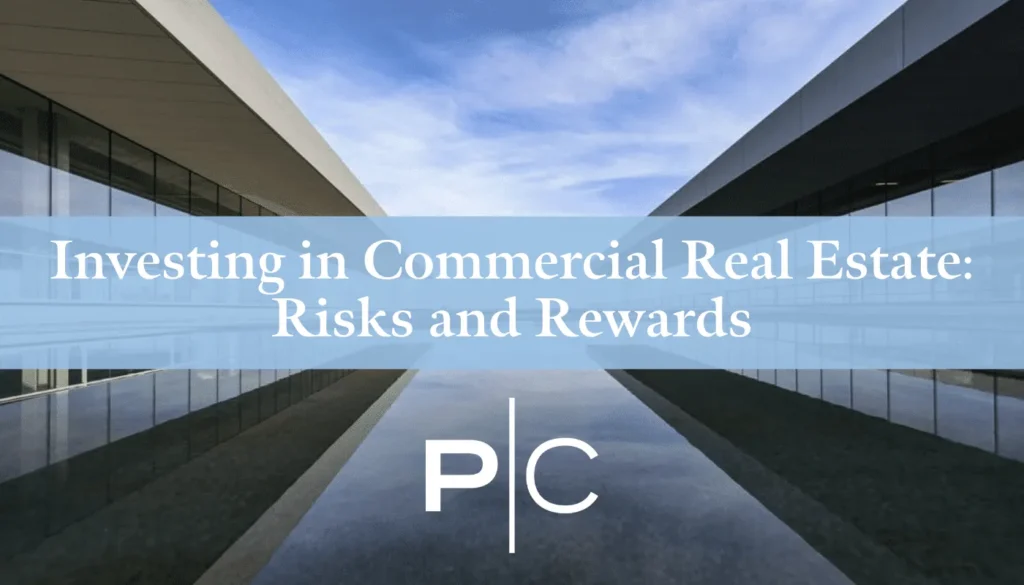Commercial real estate (CRE) has always been one of the most lucrative yet complex investment categories. From office buildings and retail centers to warehouses and multi-family complexes, CRE offers opportunities for steady cash flow, appreciation, and portfolio diversification. However, in 2025, the industry is undergoing rapid transformation fueled by technology, shifting work habits, global economic pressures, and environmental concerns.
Understanding the risks and rewards of commercial real estate in 2025 is crucial for both seasoned investors and newcomers. This article explores the biggest opportunities, challenges, and strategies to help you make informed decisions.
What Counts as Commercial Real Estate?
Commercial real estate includes properties used for business and income generation rather than personal residential use. The main categories are:
- Office spaces – From corporate headquarters to co-working hubs.
- Retail spaces – Shopping centers, malls, and standalone stores.
- Industrial properties – Warehouses, logistics hubs, and manufacturing facilities.
- Multi-family housing – Apartment complexes with five or more units.
- Specialty real estate – Hotels, medical centers, and data centers.
Key Trends Shaping Commercial Real Estate in 2025
1. Hybrid Work Revolution
The pandemic permanently altered work culture. Many companies now embrace hybrid models, reducing demand for large office spaces. Instead, flexible office layouts, co-working spaces, and suburban office parks are gaining traction.
2. E-Commerce Growth
Online shopping continues to boom, fueling demand for logistics warehouses and distribution centers. Industrial real estate is outperforming many other CRE categories.
3. ESG and Sustainability
Environmental, social, and governance (ESG) standards are influencing investment. Green buildings with energy-efficient systems and low carbon footprints attract higher valuations and tenant demand.
4. Technology Integration
Smart buildings, AI-driven security, and Internet of Things (IoT) devices are no longer luxuries—they’re expectations. Tech-enabled properties offer better efficiency and higher rents.
5. Rising Interest Rates
Higher borrowing costs are squeezing investors’ returns. Financing is more expensive, making cash-flow analysis critical before entering a deal.
6. Demographic Shifts
Growing urban populations and the rise of younger renters fuel demand for multi-family housing, while aging populations drive investments in medical office buildings and assisted living facilities.
Rewards of Commercial Real Estate in 2025
1. Strong Income Potential
CRE often generates higher rental yields compared to residential real estate. Multi-year leases provide predictable cash flow.
2. Diversification
Owning CRE reduces reliance on volatile stock markets. Many investors use CRE to balance their portfolios.
3. Inflation Hedge
As inflation rises, rental rates and property values typically increase, protecting investors’ purchasing power.
4. Long-Term Appreciation
Strategic locations, population growth, and infrastructure development continue to boost CRE property values over time.
5. Tax Benefits
Investors enjoy deductions on mortgage interest, property taxes, depreciation, and operational expenses, reducing taxable income.
Risks of Commercial Real Estate in 2025
1. Vacancy Risks
High vacancies, especially in the office sector, can erode profits. Locations dependent on single industries are particularly vulnerable.
2. Regulatory Challenges
Cities are tightening zoning laws, energy standards, and short-term rental restrictions, creating compliance burdens.
3. High Capital Requirements
CRE investments require large upfront costs, limiting accessibility to smaller investors unless they use REITs (Real Estate Investment Trusts).
4. Market Cyclicality
CRE values are sensitive to economic downturns. A recession can lead to rising vacancies and falling property values.
5. Rising Operating Costs
From property taxes to maintenance and insurance, expenses are increasing, reducing net operating income.
6. Financing Risks
With interest rates climbing in many regions, debt financing is riskier. Properties must generate strong cash flows to cover debt obligations.
Opportunities in 2025
- Industrial Real Estate: Warehouses, last-mile delivery centers, and data storage facilities are booming.
- Multi-Family Housing: Demand continues to rise due to affordability challenges in homeownership.
- Healthcare Real Estate: Medical offices, assisted living, and rehabilitation centers benefit from aging populations.
- Green Buildings: Investors are rewarded with higher rents and lower vacancies when properties meet ESG standards.
- Mixed-Use Developments: Combining retail, office, and residential spaces creates resilient income streams.
How to Succeed in Commercial Real Estate in 2025
- Conduct Thorough Market Research
Study demographics, local employment trends, and infrastructure developments. - Focus on Cash Flow
Don’t just speculate on appreciation; ensure rental income covers debt and expenses. - Diversify Across Property Types
Spread risk by investing in multiple categories (e.g., retail + industrial). - Leverage Technology
Smart management systems improve efficiency and tenant satisfaction. - Plan for Rising Costs
Include maintenance, property tax increases, and insurance premiums in your budget. - Consider REITs
If direct ownership is too capital-intensive, Real Estate Investment Trusts provide exposure with less risk.
FAQs: Commercial Real Estate in 2025
1. Is commercial real estate still profitable in 2025?
Yes, but profits depend heavily on the property type and location. Industrial and multi-family properties are performing best.
2. What’s the biggest risk in CRE today?
Vacancies in office spaces due to hybrid work and rising borrowing costs are major risks.
3. How much money do I need to invest in commercial real estate?
Direct ownership usually requires hundreds of thousands, but REITs allow entry with as little as a few hundred dollars.
4. Is CRE better than residential real estate?
CRE offers higher income potential but also higher risks. Residential tends to be more stable.
5. Should beginners invest in commercial properties?
Beginners can start with smaller multi-family properties or invest indirectly through REITs before tackling larger deals.
Conclusion
Commercial real estate in 2025 is a landscape of both opportunity and caution. Industrial, multi-family, and healthcare properties are strong performers, while office spaces face challenges. Investors who adapt to trends like hybrid work, sustainability, and technology integration can find profitable opportunities, but only with careful planning and strong financial discipline.
If you’re considering CRE this year, remember that due diligence, diversification, and strategic management are the keys to balancing risks with rewards.


